The Ministry of Defence has announced a £1 billion investment in a cutting-edge “Digital Targeting Web” and the establishment of a dedicated Cyber and Electromagnetic Command, as part of the Strategic Defence Review (SDR) unveiled by Defence Secretary John Healey.
The announcement, made during Healey’s visit to MOD Corsham – the UK military’s cyber headquarters – marks a significant shift in British defence policy, integrating lessons from the war in Ukraine to modernise how the Armed Forces detect, track, and neutralise threats across land, sea, air, space and cyberspace.
“Ways of warfare are rapidly changing – with the UK facing daily cyber-attacks on this new frontline,” said Healey. “We will give our Armed Forces the ability to act at speeds never seen before – connecting ships, aircraft, tanks and operators so they can share vital information instantly and strike further and faster.”
The Digital Targeting Web will enable rapid, integrated battlefield decisions by linking sensors and shooters across domains. For example, a threat detected by a naval or space-based sensor could be neutralised by an F-35, drone, or cyber asset in seconds.
“When the Ukrainians achieved a step-change in lethality early in the war – by being able to find the enemy, target them and attack quickly and at scale – it allowed them to stop the encircling Russian advance,” the MOD stated. The UK’s ambition is to replicate that responsiveness through advanced AI, real-time data-sharing, and digital fusion across its forces.
To complement this technological leap, the MOD will also stand up a new Cyber and Electromagnetic Command under General Sir James Hockenhull. The unit will lead the UK’s defensive cyber operations and coordinate offensive cyber capabilities in conjunction with the National Cyber Force.
The MOD says the new command will “harness all the Armed Forces’ expertise in electromagnetic warfare,” citing its ability to jam drones and missiles, intercept communications, and degrade enemy command and control systems as essential tools for future operations.
The review notes that the MOD has had to protect its networks from over 90,000 “sub-threshold” attacks in the past two years alone. The establishment of the new command is described as a step to “seize and hold the initiative in a high-tempo race for military advantage.”
The reforms also include efforts to fast-track new cyber specialists into the military. The “Cyber Direct Entry” programme, first announced in February, will place recruits into operational cyber roles by the end of 2025. Starting salaries exceed £40,000, with up to £25,000 in additional skills pay and no requirement to handle weapons or serve in combat zones.
“By attracting the best digital talent, and establishing a nerve centre for our cyber capability, we will harness the latest innovations, properly fund Britain’s defences for the modern age and support the government’s Plan for Change,” Healey said.



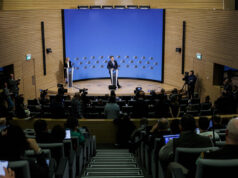
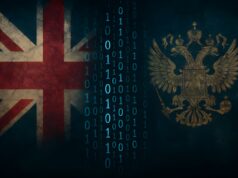
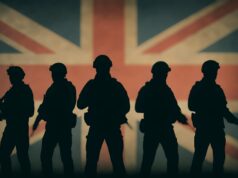

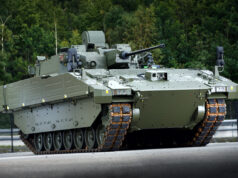
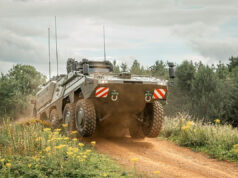
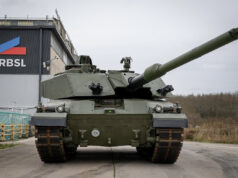
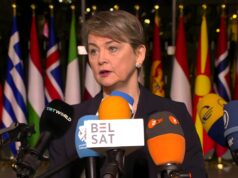
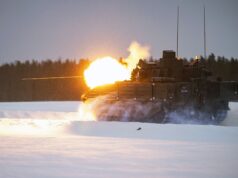

Presumably called a targetting web because having AI involved in a kill web would bring out both the ethicists and tinfoil hat brigades in force.
To stick with the usual parlance they’d presumably call it a C4ISTAR web, but that would probably leave a lot of people nonplussed.
I was hoping there would be an article on this so I could give some “balance” and expose what I see pure spin, this is an area I look into quite a bit.
I had already commented on this on the EU Treaty article when J mentioned it, so this is a part repeat of that with some extra thoughts added.
The “new” Cyber and Electromagnetic Command?
There’s seems to be a new one of these every few years!
It’s currently CEMAG, Cyber and Electomagnetic Activities Group. ( Based at Digby. Which reported to DCI3, Director Capability, Strategy, and Policy within Defence Intelligence, itself a part of Strategic Command.)
Beneath this entity is the JFCG, Joint Forces Cyber Group, itself a part of CEMAG, and the holder of the varied tri service JCUs, Joint Cyber Units, which when I last studied there were three, Corsham, Cheltenham, and the Cyber Reserve at another location not too far away.
So this is not new. We have a name change from a “Group” to a “Command.” Is there a corresponding increase in the number of personnel, and of JCUs?
Who knows, it is classified. I hope so.
To quote the article – “the MOD will also stand up a new Cyber and Electromagnetic Command under General Sir James Hockenhull. The unit will lead the UK’s defensive cyber operations and coordinate offensive cyber capabilities in conjunction with the National Cyber Force.”
( Defensive Cyber was reportedly already the remit of CEMAG, and NCF was set up to do the offensive side. It was detailed as such previously, so this MoD quote seems to repeat the existing.)
The MOD says the new command will “harness all the Armed Forces’ expertise in electromagnetic warfare,” citing its ability to jam drones and missiles, intercept communications, and degrade enemy command and control systems as essential tools for future operations.”
Again not new, they have done this for years. But I need to digress from the Cyber path. The “Intercept Communications” bit is intriguing, as again such a tri service formation has been doing that for years, which was not a part of CEMAG – the JSSO, Joint Service Signals Organisation, part of the Joint Forces Intelligence Group, part of DI.
This has JSSU’s, Joint Service Signals Units, at Digby, Cheltenham, Ayios Nikolios ( and 4 other sites in Cyprus ) and in the Falklands, south of MPA. A JSSU ( Reserve ) also exists. Their official website description is hilarious, and the wording changes over the years “conducting research into strategic communications” and “specialist support.” This is nonsense, they are SIGINT units, part of the military contribution to GCHQ’s work. Any casual study of the antecedent RAF and Army units that preceded them, such as 9 Signals Regiment and 33 Signals Unit, both Cold War spy organisations, reveal this lineage.
So the “new” Cyber & Electromagnetic Command” seems to suggest a merger of two separate areas. Interestingly, I had caught wind of such a while back when I read that the JFIG no longer existed, but I could not find any more details, so maybe this is the result, it has been merged with CEMAG into this new “Command” and HMG. the MoD as usual are making hay of it as if it is all exciting progress.
Back to Cyber, and to muddy the waters further. The Army also have a similar sounding Group, ” Cyber and Electro Magnetic Activities Effects Group” ( part of FAT, which has 3 Signals Regiments under command and which seems to concentrate on Field Cyber and the EW/SIGINT side through 14 and now 21 Signals Regiments. )
Back to the existing National Cyber Force, who’s HQ at Samlesbury, last time I looked isn’t even built yet, but certainly exists somewhere there, as personnel are already being posted, maybe to the existing BAES buildings.
This “new” outfit, Cyber and Electromagnetic Command, also seems to be taking the NCFs turf, as the Offensive Cyber role was going to be NCFs remit and the article states this command will work alongside NCF.
Which goalposts were moved, and why? Is this new Command a Labour thing, as the NCF was a Tory invention? Part of the never ending politics surrounding the military which is then used to grandstand, as Healey magically appears for photos at GOSCC at Corsham?
This Command seems to comprise the same component units as before, but under a name change and bits added on from elsewhere, thus “new.”
Endless moving of the deckchairs to get headlines while conventional forces wither.
I know enough on these varied organisations, which are almost by design difficult to follow and keep tabs on, and the endless rebranding that MoD indulge in.
I also know of their component units cover name which was being used online when recruiting for posts, yet in reality I know very little of these myriad organisations.
So I sent a comprehensive FOIA request, many months ago, carefully wording each question, on all these existing groups, as HMG will always side step if wording is not precise.
I got a stonewall refusal to answer any of my questions even at a basic level of who’s who and under what command, even though some of that is found online elsewhere, beyond confirmation of being Strategic Command assets, as the Telegraph article says, and which this article confirms with General Sir James Hockenhull, CStratCom.
Due to the secrecy, it is impossible to assess the Cyber area reasonably compared to conventional forces, which we also need and are reducing.
Spin for me, sorry. The expansion seems to be in merging already existing into a bigger administrative and operational grouping, though the use of AI and the “new” Digital Targeting Web ( it has probably been brewing in the black for years ) is welcome.
The implication is that when Defence Digital moves to NAD, it will leave its Cyber Defence arm behind under Stratcom, as I can’t see Jim Hockenhull moving to head a totally new cyber area, although anything is possible. Moving Defensive and Offensive Cyber under the same structure seems reasonable to me, but I agree it’s part of the current government deckchair rearrangement initiative part two, or Defence Reform as they prefer to call it.
Another thought. Note the messaging and timing here, being unveiled a few days before the SDR is supposed to be released, or the gibberish parts of it.
When this tactic highlighting cyber and tech has been used previously before SDRs, wholesale cuts to conventional forces resulted.
Everything else, “wait for the SDR”
?
It’s probably just a way of stretching the headlines and giving John Healey a little bit more time in the sun (and indeed The Sun). I suppose we’ll find out next week.
The pace of change in these domains and technologies (drones, AI, EW, Cyber, Space) is quite dazzling and it’s hard to know how best we should collectively these capabilities forward.
Does the war in Ukraine herald a generational jump in fighting or will it turn out to be merely a reflection of a unique set of circumstances?
I personally suspect the former but even if this is true, to what extent and in what way will it be true? Will we see, for example, a convergence across land, sea and air, with a small number manned platforms each controlling an attendant fleet of cheap(er) and therefore more disposable drones e.g. on land, a highly-protected manned mothership operating a diverse fleet of say six unmanned platforms (artillery, mortar, EW, laser, drone carriers, air/drones defence).
And what other non technical factors will influence its development of these capabilities? In a world of declining populations and ever intense news coverage, will political and social factors push us to use this new technology primarily as a way to reduce casualties and avoid adverse public opinion regardless of any improvement in actual military effectiveness it provides?
The issue is that if we guess wrong and we elect to spend a ton of money recreating the Armed Forces of our youth (roughly the 1980s to 2000s), we could end up with a load of white elephants that can’t actually be used in anger as we couldn’t afford any losses in either men or materiel (you could argue that as it stands, the carriers would fit in this category).
This isn’t an excuse not to do anything or get on and procure things already in plan; we just need to be careful about the inbuilt biases we all have and that could lead us astray if we’re not careful.
As it stands, I can currently see two obvious lessons that we can already take away from the war in Ukraine: 1. we need to base our defence on a pragmatic and honest view on the actual threats we face as a country (e.g. Russia is a full spectrum threat and China primarily a cyber & espionage one) and 2. we need to invest massively in building a robust sovereign high-tech industrial base which is capable of quickly iterating new capabilities to deal with these evolving threats.
In practice, the former means we wouldn’t squander precious resources on preparing for a war with China (if you’re a country like Finland, Poland or Ukraine you KNOW who your enemy is!) and the latter would require a lot of effort to build a full committed consortium of universities, defence firms (both large and small), the Services and MOD, and all following a long term plan. Not easy to either build or maintain given the many competing motivations.
Since we can’t fully know what the future holds, we need to be like the Ukrainians: really good at evolving and adapting to meet new threats – displaying the same resilience, innovation and commitment to be fast-moving.
In a way, it echoes France’s approach to building a fully sovereign defence force, all underpinned by French industry and know-how. We don’t have to be as prescriptive as the French; happily we in the UK are really good at working in collaboration with others on new capabilities (and so sharing costs!) e.g. GCAP, AUKUS. Vive l’Angleterre!
Cheers.
The key aim of the SDR must be to re-establish this country’s conventional deterrent.
Totalitarian dictators intent on demographic imperialist expansionism are not deterred by cyber, AI, digitisation and unmanned capabilities, even if they should be.
They are deterred by mass. The shop window has to be impressive. That means manned air, massed air defence and armoured divisions.
We may not wish to fight the last war….but that is the war that they are intent on re-fighting and they certainly have mass.
We must deter them in that aim…for the long term until or unless there is a definite and protracted sea change in their system of government.
Good, if it isn’t just spinning old news, but £1bn spent on cyber is £1bn less spent on classic military areas, such as increased numbers of manpower and fighting platforms, enablers and munitions. Not criticising – just preparing for SDR (on Monday?) not announcing much, if anything, by way of increased numbers in such areas.